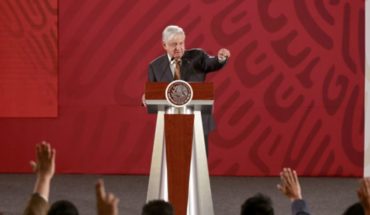While in Ecuador the government of Guillermo Lasso and the indigenous movement reached an agreement to put an end to the protests over the high price of fuel and the cost of living, in Peru, the transport unions have announced an indefinite general strike due to the lack of solution to their list of claims.
After more than two weeks of protests, which have left six dead and some 500 injured, Ecuador has pledged to repeal the state of emergency and lower the price of subsidized fuels by 15 cents in total, among other measures. As in many other places in the world, the price of gasoline and, consequently, of food, in Latin America, has increased since 2020, driven mainly by the coronavirus pandemic and the war in Ukraine.
Peru, for example, pays the most expensive gasoline in the region, according to a study by the US financial advisory company Bloomberg: in the Andean country they pay up to 6.2 dollars per gallon of gasoline, followed by Brazil (5.8 dollars), Chile (5.4 dollars), Paraguay (5.3 dollars), Mexico (4.6 dollars), Argentina (3.7 dollars), Ecuador (2.6 dollars), Colombia (2.3 dollars) and Bolivia (2.1 dollars).
Why are there different prices?
In this report, Bloomberg highlights that the cheapest gasoline in the region is in those countries that have fuel subsidies. Bolivia, Colombia and Ecuador, for example, have a band system for pricing. In Peru, the non-inclusion so far of Gasohol 97, Gasohol 95 and Gasohol 90 in the Fuel Price Stabilization Fund (FEPC) means that the objective of mitigating the impact of international prices is not met.
“In general, there has been a very slow response from governments to a problem that has been growing for months. They prioritize the fiscal box in the face of social problems and there is a strange belief that people are going to endure,” economist and political analyst David Rivera told DW. That, according to the expert, “is naïve, but also, in such a concrete context, which directly affects people, such as the price of fuel and food, it is like a denial of reality.”
Also in Argentina, the shortage of diesel has been worsening for weeks, which has led to protests by transporters. This week, a truck driver became the first fatality after being hit by a stone. Authorities arrested three suspects of attacking the carrier, who allegedly tried to overcome a roadblock. Now, the country’s main agricultural groups have joined the demand and called for a strike on July 13, 2022.
Peruvian President Pedro Castillo has yet to reach an agreement with his country’s transporters and farmers.
Measures in other countries
Although in Central America the discomfort that afflicts other countries in the region due to the high cost of fuels seems to be still under control, some governments have begun to take measures. One of these was Panama, which in June temporarily froze the price of fuel at $3.95 a gallon.
Also in El Salvador, the Legislative Assembly, controlled by President Nayib Bukele, has frozen fuel prices until the end of August, with the aim of cushioning the increases. Meanwhile, in Honduras, many sectors have demanded a reduction in the cost of fuel. One of the latest measures adopted by the government of Xiomara Castro has been the freezing for four weeks of the price of regular gasoline and diesel, in order to alleviate the impact derived from the international crisis.
In Costa Rica there have been no mass protests over the high cost of living, but the price of fuels reached all-time highs of about $1.5 per liter of gasoline. However, President Rodrigo Chaves has refused to take action to lower the fuel tax, arguing that he does not want to create a hole in state finances.
For the economist Rivera, the solution was to give people directly a bonus to compensate for the increase in energy and food tariffs, as has happened in other countries of the world. Or, perhaps, opt for one tax cut at a time. “But the ministries of Economy, in general, never measure the social or political impact,” he laments. He adds: “The only thing that generates all this is a greater discomfort with democracy, the market economy and the political system. Therefore it will always drive a greater willingness to seek radical solutions in the future.”
Follow us on





